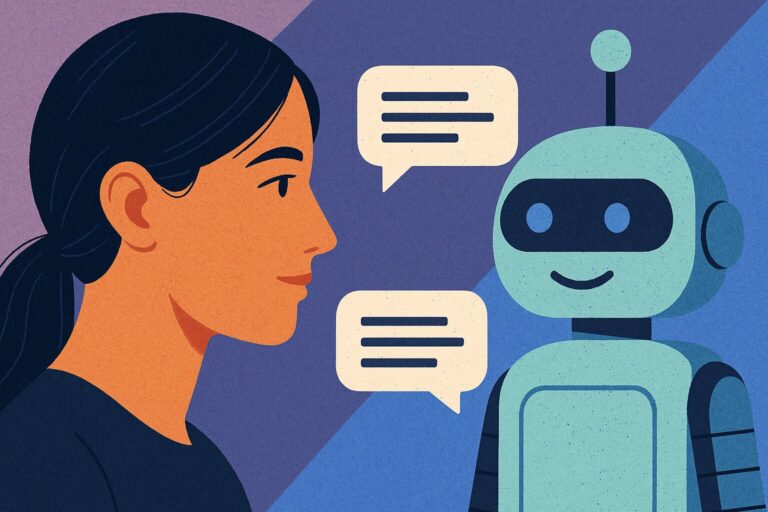There’s a mental health shortage in the United States, and it’s not a quiet one. Long waitlists, insurance barriers, and geographic disparities mean millions of people are struggling to access basic psychological support. As of March 2023, 160 million Americans reside in regions where mental health professionals are in short supply, with a gap of more than 8,000 providers needed to meet the demand.
So it’s no surprise that some are turning to something faster, cheaper, and always available: AI therapy apps.
The promise is simple. Artificial intelligence can offer round-the-clock support, deliver evidence-based techniques, and scale up to meet unprecedented demand. And according to new research, that promise isn’t entirely hollow. In fact, it’s already showing signs of being remarkably effective. But here’s the real question: Can an app truly take the place of a human therapist?
The Hype: AI as a Mental Health Bridge
Recent research published in the New England Journal of Medicine looked at a chatbot developed at Dartmouth College and found something striking. Not only did the AI therapist reduce symptoms of depression and anxiety, but it delivered results on par with the “best evidence-based trials of psychotherapy,” according to researcher Nick Jacobson. Patients even formed a “strong relationship with an ability to trust” the bot.
This isn’t a fluke. Other early studies have shown similar outcomes. One meta-analysis published last year found that AI tools using cognitive behavioral therapy techniques were “non-inferior” to traditional therapy for treating mild to moderate symptoms.
The draw is obvious. These bots don’t sleep, don’t judge, and never cancel appointments. They’re accessible to people in rural communities or those who can’t afford therapy. In short, they’re filling a very real gap.
But the moment we start talking about “replacement,” the story gets more complicated.
The Reality: What AI Still Can’t Do
Therapy isn’t just about techniques. It’s about being seen. Heard. Understood by another human being who can hold your pain without flinching. For many clinicians and researchers, that human to human connection is the core of what makes therapy work.
Sociologist Sherry Turkle puts it plainly: “Therapy is about forming a relationship with another human being who understands the complexity of life.” A bot can simulate empathy. But can it really feel it?
Even supporters admit the illusion is fragile. “If the client is perceiving empathy,” said psychologist Lucas LaFreniere, “they benefit from the empathy.” But that perception may depend on a user’s willingness to suspend disbelief. Something not everyone can or wants to do.
When the Illusion Fails
There are real risks to overreliance on AI therapists. Nigel Mulligan, a psychotherapy lecturer at Dublin City University, warns that bots may “further isolate vulnerable patients instead of easing suffering.” For people with severe trauma or suicidal thoughts, the absence of a responsive, emotionally attuned human presence could be dangerous.
That fear isn’t hypothetical. In February, the American Psychological Association issued a stark warning to the Federal Trade Commission about AI chatbots “masquerading” as licensed therapists. “People are going to be misled,” said APA CEO Arthur C. Evans Jr., “and will misunderstand what good psychological care is.”
Legislators in California are already taking action. A proposed bill would make it illegal for tech companies to deploy an AI chatbot that pretends to be a licensed mental health provider. “They’re not licensed,” said Assembly Member Mia Bonta. “They shouldn’t be allowed to present themselves as such.”
The concern isn’t that these bots exist. It’s that people might mistake them for more than they are.
Where AI Works (and Where It Doesn’t)
To be clear, AI in therapy isn’t useless. In fact, when used well, it can be a powerful supplement. Dr. Jacques Ambrose at NewYork-Presbyterian blog describes AI as a way to make therapy “more accessible, more personalized, and more efficient.” Large language models can analyze massive amounts of patient data to deliver tailored, evidence-based interventions.
For people who might never see a human therapist due to cost, stigma, or time constraints, this is no small thing. AI therapy apps can help users track their mood, reframe negative thoughts, and learn coping strategies. They offer structure, consistency, and anonymity.
But they also have limitations that shouldn’t be ignored. AI lacks emotional nuance. It doesn’t understand cultural context the way a human therapist might. It doesn’t recognize when a client is hiding something or dissociating or on the verge of harm.
And it certainly doesn’t know when to just sit in silence with someone’s grief.
The Future: Hybrid Models, Not Replacements
The most honest answer to the “replacement” question might be the least flashy one. AI isn’t here to replace human therapists. It’s here to assist them.
In practice, the most promising models are hybrid ones. Think of an AI chatbot as a coach between sessions, a triage tool for new clients, or a way to help clinicians monitor patterns in patient data. Used this way, AI can expand the reach of care without pretending to be the care itself.
But it’s going to require regulation. Transparency. And most of all, humility. Because no matter how advanced the algorithm, no machine will ever understand the human condition as deeply as another human.
The Bottom Line
AI therapy apps are not junk. They’re not a gimmick. They can help people, and in some cases, do so with clinical precision. But they’re not a substitute for human empathy, intuition, or connection.
They are tools. Not therapists.
And in a world desperate for mental health support, that distinction matters more than ever.
Source: TheWeek
